Space
Do the stars move in the sky and change their position?
Published
2 months agoon


Do the stars move in the sky and change their position?
The night sky is very dark, But it has its own beauty and those bright points that we call stars adorn the night sky. These stars are eternal stars and are located in fixed constellations, and their location does not change during a person’s life; Even humans who lived in the past saw constellations in the same way we see them and of course used other names to identify them. We now see what ancient humans saw as if the stars were always fixed and did not move, unlike the planets.
Have you ever seen animations made from the movements of galaxies? If you pay close attention, you will see that when these galaxies merge with each other or are affected by each other’s gravity, the stars move like bees to and fro. We all know that the stars also move; But can we never see them move? How fast are these stars moving? Can we ever notice their movement?
Of course, the stars move; But their distance from us is so great that we cannot notice their movement. For thousands of years, astronomers have studied the motion of the stars, calling it astrometry. They observe the stars closely and study how the stars move over many years. Astrometry has a long history and has been done since 190 BC. In 190 BC, Hipparchus, one of the famous astronomers, geographers and mathematicians from ancient Greece, prepared and arranged a long list of 850 bright stars in the sky along with their positions. One of the students of Hipparchus, named Ptolemy, made more observations of the sky and continued in the footsteps of his master. After many observations, he compiled a precious work called al-Majsti (Majsti).

Ptolemy called the earth the center of the universe and stated that the stars, the sun, the moon, and other planets revolve around the earth concentrically. Of course, Ptolemy’s view of the world was wrong; But what is important is his precious writings in Kitab al-Majasti. Ptolemy was able to calculate and record the brightness and position of more than 1000 stars in the sky with extraordinary accuracy. A thousand years after Ptolemy, Abdulrahman Sufi, a prominent Iranian mathematician and astronomer, managed to make much more accurate measurements of the sky by means of an astrolabe.
Undoubtedly, one of the most famous astronomers in history is Tycho Brahe. An astronomer from Denmark, he was known by the people for his extraordinary ability to measure the position of the stars. At that time, Tyco Brahe succeeded in designing very precise instruments for tracking stars so that he could track many more stars. He was able to measure the position of the stars with an accuracy of 15 to 35 seconds of arc. In order to make a comparison with the accuracy of Tyco Brahe’s measurement, it is enough to know that a strand of human hair seen at a distance of 10 meters is equal to one second of arc. One interesting thing to know about Brahe is that he had no nose; In fact, Brahe lost his nose in a duel and designed a brass alloy artificial nose to replace it.
In 1807, Friedrich Bessel, a famous German astronomer, managed to calculate the distance of a nearby star called 61 Cygni or 61 chickens from the Earth for the first time. He used the parallax or parallax method to determine the distance between this star and the Earth. He acted in such a way that he considered the radius of the earth’s orbit around the sun as the base of a triangle and then observed the star. 6 months later, that is, when the earth was on the other side of its orbit with respect to the sun, he again observed the star he wanted. He knew that the stars move in the sky, after measuring this amount of displacement, he measured the distance between the two points of the earth’s orbit where the earth was located during the observation of the star, and then he was able to calculate the distance from the earth to that star. slow

Two centuries after Friedrich Bessel, astronomers managed to develop this method and accurately calculate the distance of the stars from the Earth and the amount of their displacement; But in order to be able to accurately measure the displacement of the stars and observe them, we need to travel to space. In 1989, the European Space Agency launched a mission called Hipparchus, named after the Greek astronomer. The purpose of the mission was to measure the positions as well as the motions of nearby stars in the Milky Way. During this mission, Hipparchus was able to measure the positions and motions of 118,000 stars with high precision, paving the way for the calculation of another 2 million stars.
Hipparchus was an efficient mission and many astronomers used it; But this mission was not the best because shortly after the end of the mission, a new phenomenon named Gaia arrived.
In December 2013, the European Space Agency launched a new mission called Gaia (named after an ancient legend) to make such calculations for the billion stars in the Milky Way. Although one billion is a very big number, this only accounts for one percent of the stars in the Milky Way. Gaia will soon complete the calculations for 150 million stars and tell us everything that has happened over time. This is a huge achievement and one that Hipparchus would probably be proud of.
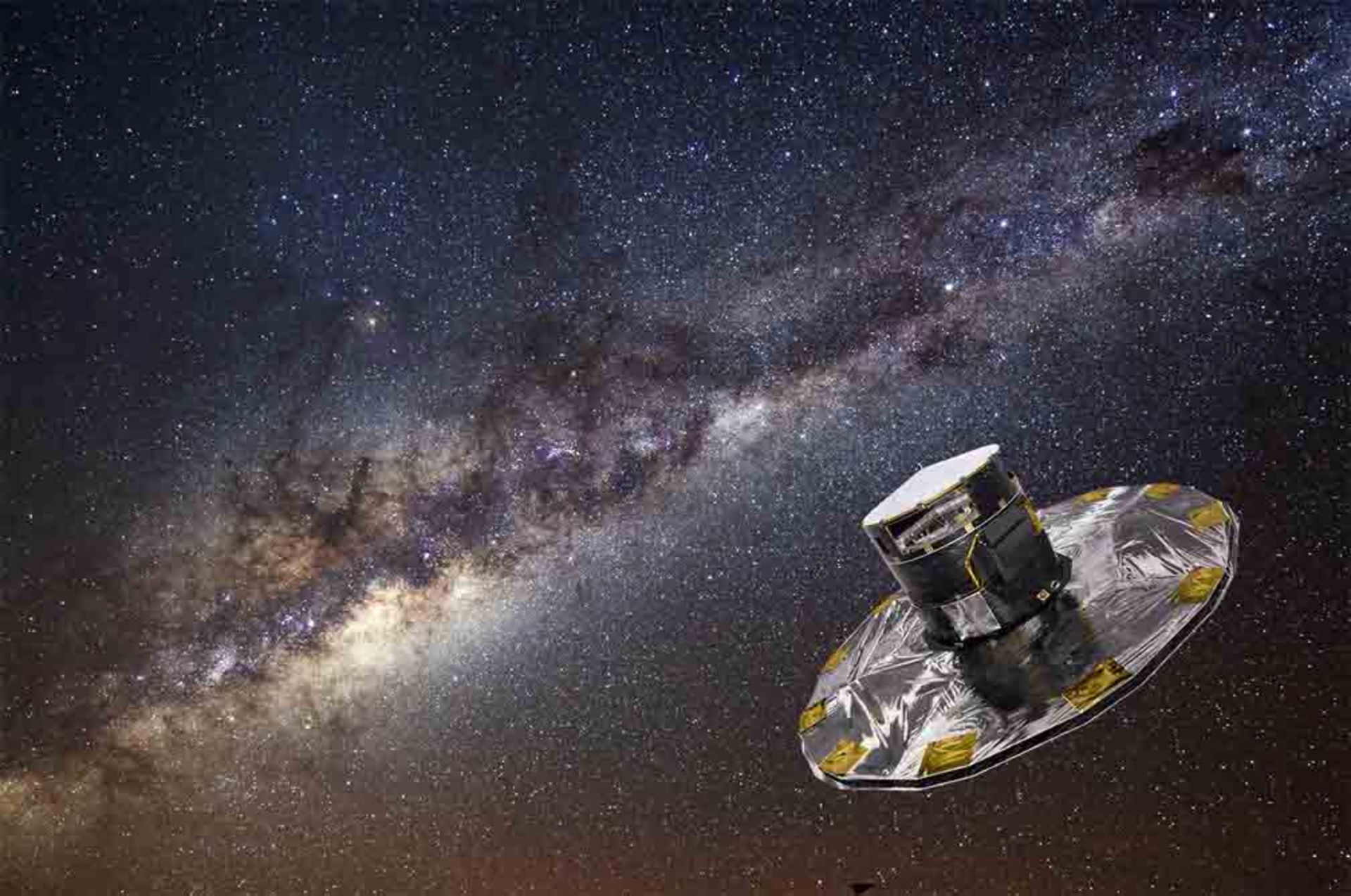
These precise measurements, which took several years, show us how the stars move in the sky. Of course, the movement of the stars cannot be detected with the naked eye, and it may take thousands or tens of thousands of years for a star to slightly change its position in the sky. For example, consider the constellation Ursa Major (the Great Bear); If you could travel back in time or into the future, you would see the stars in this constellation change position, or you might not even be able to recognize this constellation.
When a star moves in one direction in the sky, astronomers call this type of motion ” relative displacement “. The speed of movement of a star in the sky is usually 0.1 seconds of arc per year. This amount is not visible at all; But over the course of 2,000 years, the star can move about half a degree across the sky, or in other words, it can move across the sky as wide as the Moon. The fastest relative displacement is that of Bernard’s Star, which moves across the sky at a speed of 10.25 arcseconds per year, and after 2000 years, it can move as much as 5.5 degrees or 11 times the width of your hand.
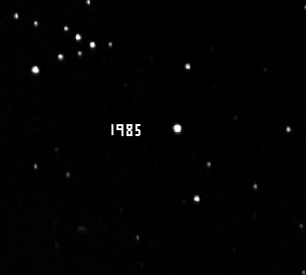
When a star moves closer or farther away from us, astronomers say that the star has accelerated radially. They calculate the star’s radial velocity using the Doppler effect . When a star approaches us, the light that reaches us from that star tends towards the blue wavelength, and if that star moves away from us, we see that its light tends towards the red wavelength at the end of the spectrum. This phenomenon is called redshift, which has many uses in astronomy. By taking into account the redshift as well as the relative displacement of a star, we can calculate the path a star has taken in the sky with very high precision. In fact, this is one of the applications of the Doppler effect in astronomy, and another application of the Doppler effect is that it shows us that the universe we live in is expanding.
Read More: Why was Pluto removed from the list of planets in the solar system?
We know that the dwarf star Hipparchus 85605 is moving towards us at a very high speed. This star is currently 16 light years away from us; But by the next 100,000 years, this distance will reach 13 light years (8,200 times the distance of Earth from the Sun). The approach of the star does not directly affect us, But its gravitational effect can take some of the comets that are in the Oort cloud region out of orbit and send them toward the solar system.
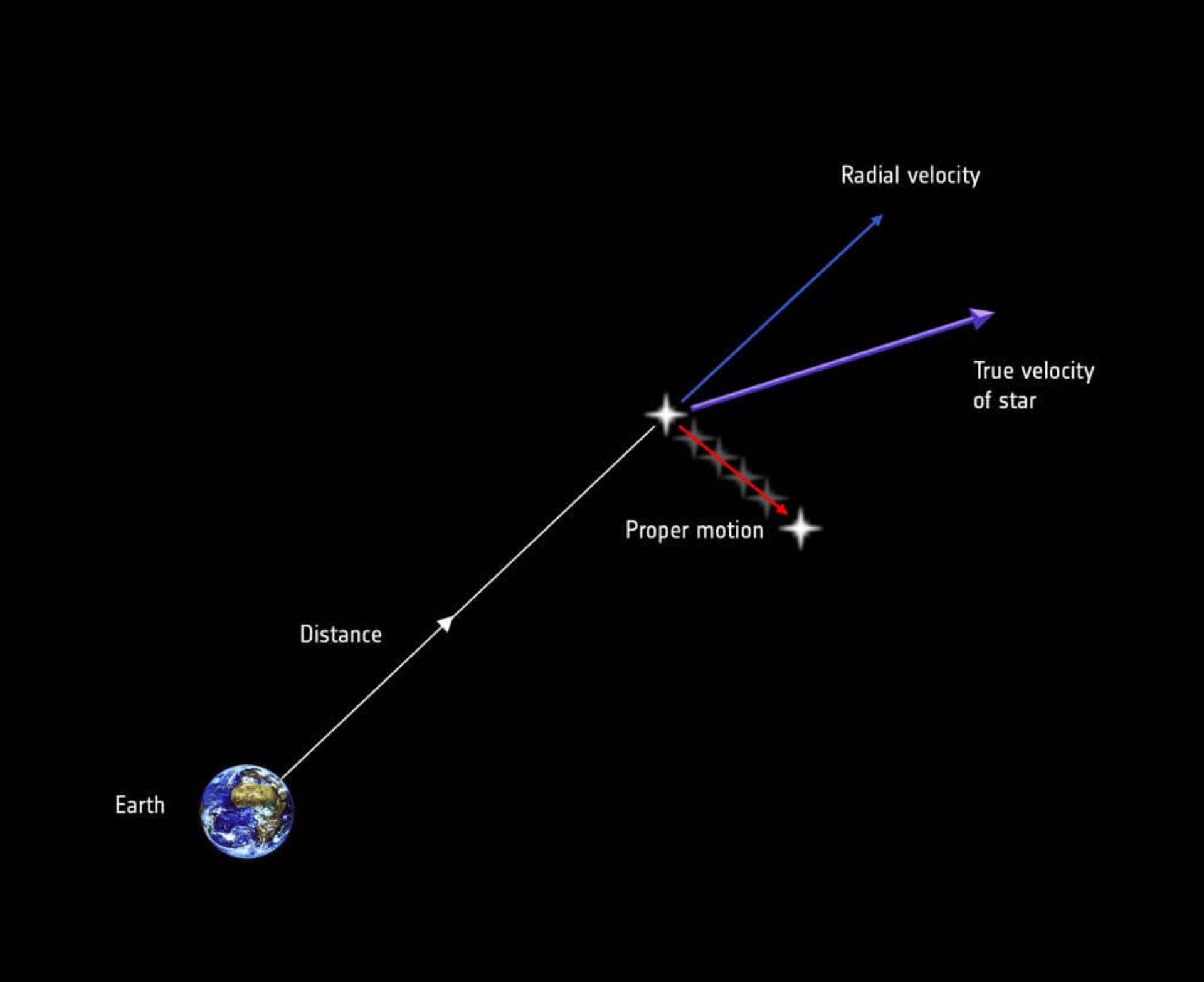
The movement of the stars is relatively gentle; But as they move in their orbit around the center of the Milky Way galaxy, they interact gravitationally with each other and may collide. Most stars move slowly, But there are phenomena in the universe that make the stars move at a very high speed.
When a pair of stars get very close to the supermassive black hole cloud at the center of the Milky Way galaxy, one of them gets caught in the black hole’s gravity; But the other star is accelerated and thrown without causing the slightest change in the mass of the other. Once every 100,000 years, a star is ejected from the center of the Milky Way due to being in such a situation.
A similar thing happens when a small star orbits a larger star. Over time, the big star becomes ever bigger and becomes a red giant, and a supernova explosion occurs. It is at this point that the smaller star, like a stone thrown from a rock hook, will no longer be affected by gravity and will be thrown towards the boundless space at an extraordinary speed. Astronomers have found that these stars are moving at a speed of 1.1 million kilometers per hour towards the center of the Milky Way galaxy.

All the movements we have talked about had a natural origin; But imagine that in the future, human civilization or other civilizations will be advanced enough to move a star in different directions at will. In 1987, a Russian astrophysicist named Leonid Shkadov presented a very advanced method by which scientists could move a star at a slow speed. Of course, this was a very imaginative hypothesis; But it is not impossible to do. The method presented by Shkadov was such that a very large mirror was placed on one side of the star and the star itself could act as an accelerator. Photons hitting the mirror from the star were reflected, creating a momentum similar to a solar sail.
The mirror that is made must be big enough to have a gravitational interaction with the star and overcome it, But the light can create enough pressure to prevent the star from moving toward the mirror. This can create a very weak but steady push on the other side of the star, moving it in any direction our civilization wants. It may take billions of years for the star to settle in the desired position, But it is possible to do this in the future.

Those who are able to do such a thing will be a type 3 civilization. A Type 3 civilization could control vast swaths of the Milky Way galaxy, harness and control the energy of billions of stars, and continue to expand its empire. It is possible that this civilization could gather all the stars together in a sphere or place them in a flat disk to minimize communication time. Astronomers are now looking for galaxies that are under the control of a Type 3 civilization. Such galaxies can be seen at visible wavelengths; But unfortunately, we have not managed to observe one of them, which of course is normal; Because the galaxies that are in this world are very far from us and we cannot observe some of them.
Our lifespan as humans is limited and that is why we think that the stars are fixed in the sky and do not move; But if you can speed up time, you will see that everything in the sky is moving and the stars are moving back and forth like airplanes. Unfortunately, limited life does not allow us to enjoy this beautiful view.


You may like
-




Discover a new answer to the ancient mystery of a Venus!
-

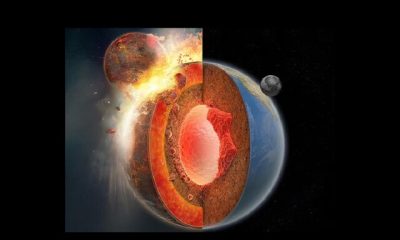


Discovering new evidence of the impact that formed the Earth’s moon
-

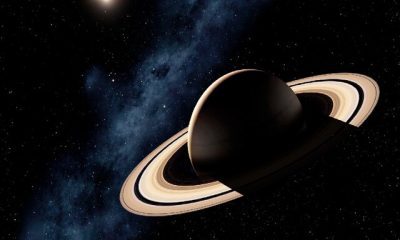


Maybe alien life is hidden in the rings of Saturn or Jupiter
-

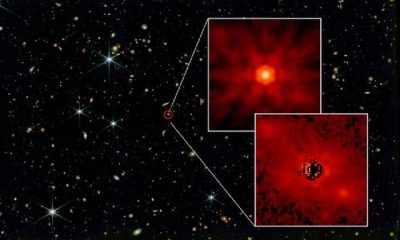


Discovering new clues about the formation of the world’s first black holes
-




NASA is going to space exploration with a 36-pixel camera
-

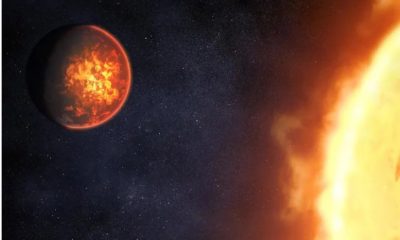


How to prevent the earth from being baked by the scorching sun?
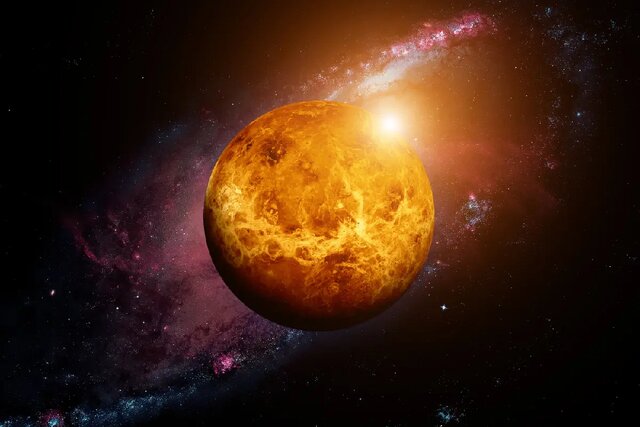

New research from the University of Colorado Boulder shows that Venus is losing water faster than previously thought, which could provide information about the planet’s early habitability.
Discover a new answer to the ancient mystery of Venus!
Today, the atmosphere of Venus is as hot as an oven and drier than the driest desert on Earth, but our neighboring planet was not always like this.
According to Converse, billions of years ago, Venus had as much water as Earth today. If that water was once liquid, then Venus was probably once habitable.
Over time, almost all of Venus’s water reserves have been lost. Understanding how, when, and why Venus lost its water reserves will help planetary scientists understand what makes a planet habitable, or what can turn a habitable planet into an uninhabitable one.
Scientists have theories to explain why most of the water supplies have disappeared, but the amount of water that has disappeared is actually greater than predicted.
Research conducted at the University of Colorado Boulder (CU Boulder) reports the discovery of a new water removal process that has been overlooked in recent decades but could explain the mystery of water loss.
Energy balance and premature water loss
The solar system has a habitable zone. This region is a narrow ring around the Sun where planets can have liquid water on their surface. Earth is in the middle of the habitable zone, Mars is outside on the very cold side, and Venus is outside on the very hot side. The place of a planet in this habitable spectrum depends on the amount of energy received by the planet from the sun and also the amount of energy emitted by the planet.
The theory of how Venus loses water reserves is related to this energy balance. Sunlight on early Venus decomposed the water in its atmosphere into hydrogen and oxygen. Hydrogen warms a planet’s atmosphere, acting like having too many blankets on the bed in the summer.
When the planet gets too hot, it throws the blanket away. Hydrogen escapes into space in a process called “hydrodynamic escape”. This process removed one of the key elements, water, from Venus. It is not known exactly when this process occurred, but it was probably around the first billion years of Venus’ life.
Hydrodynamic volatilization stopped after most of the hydrogen was removed, but some hydrogen remained. This process is like pouring out the water in the bottle, after which there are still a few drops left in the bottle. The remaining droplets cannot escape in the same way, but there must be another process on Venus that continues to remove the hydrogen.
Small reactions and big differences
This new research suggests that a neglected chemical reaction in Venus’s atmosphere could produce enough volatile hydrogen to close the gap between the missing water supply and the observed water supply.
The way this chemical reaction works is in the research of the University of Colorado Boulder. In the atmosphere, HCO ⁺ gas molecules, which are composed of hydrogen, carbon, and oxygen atoms and have a positive charge, combine with negatively charged electrons.
When ⁺ HCO and electrons react, ⁺ HCO breaks down into a neutral carbon monoxide molecule, CO, and a hydrogen atom. This process gives the hydrogen atom the energy it needs to exceed the planet’s speed and escape into space. The whole reaction is called HCO ⁺ dissociative recombination, but the researchers abbreviated it as DR.
Water is the main source of hydrogen on Venus. Thus, the DR reaction dries out the planet. The DR reaction probably happened throughout the history of Venus, and this research shows that it probably continues to this day. This reaction doubles the rate of hydrogen escape previously calculated by planetary scientists, changing their understanding of current hydrogen escape on Venus.
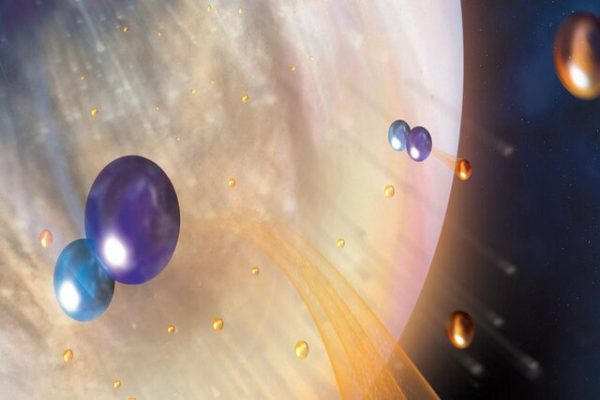

Understanding the conditions of the planet Venus with data and computer models
Researchers in this project used computer modeling and data analysis to study DR in Venus.
Modeling actually began as Project Mars. Mars also had water before – though less than Venus – and lost most of it.
To understand the escape of hydrogen from Mars, the researchers created a computational model of the Martian atmosphere that simulated the chemistry of the Martian atmosphere. Despite being very different planets, Mars and Venus have similar atmospheres. Therefore, the researchers were able to use this model for Venus as well.
They found that the DR reaction produced large amounts of fugitive hydrogen in the atmospheres of both planets. This result is consistent with observations made by the Mars Atmospheric and Volatile Evolution Mission (MAVEN) orbiting Mars.
Collecting data in the Venus atmosphere would be valuable to support the computer model, but previous missions to Venus have not measured ⁺ HCO; Not because it doesn’t exist, but because they weren’t designed to detect it. However, they investigated the reactants that produce HCO ⁺ in Venus’s atmosphere.
By analyzing observations made by the Pioneer probe and using their knowledge of the planet’s chemistry, the researchers showed that ⁺ HCO is likely present in the atmosphere in similar amounts to the computer model.
Searching for water
This research has solved part of the puzzle of how planetary water reserves are lost, which affects how habitable a planet is. We have learned that water loss occurs not only in one moment but over time and through a combination of methods.
Read more: Maybe alien life is hidden in the rings of Saturn or Jupiter
The faster loss of hydrogen through the DR reaction means that it takes less time overall to remove the remaining water on Venus. Also, this means that if oceans existed on early Venus, they could have existed for much longer than scientists thought. This allows more time for potential life to develop. The research results do not mean that oceans or life definitely existed. Answering this question requires more science.
The need for new missions and observations of Venus is felt. Future missions to Venus will provide some atmospheric surveys but will not focus on its atmosphere. A future mission to Venus, similar to the Moon’s mission to Mars, could greatly expand our knowledge of how the atmospheres of terrestrial planets form and evolve over time.
With technological advances in recent decades and renewed interest in Venus blossoming, now is a great time to turn our gaze to Earth’s sister planet.
Space
Discovering new evidence of the impact that formed the Earth’s moon
Published
22 hours agoon
09/05/2024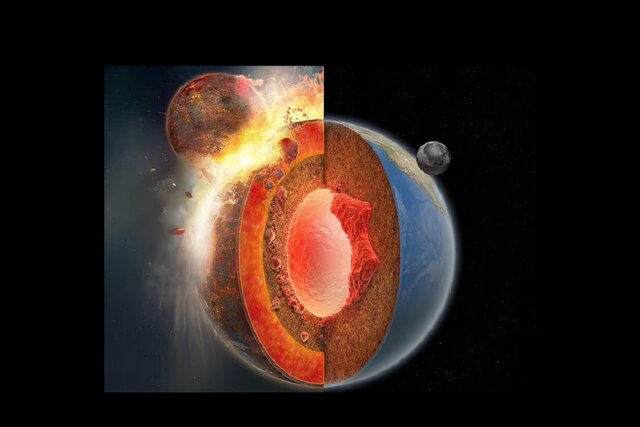

Discovering new evidence of the impact that formed the Earth’s moon. Data from NASA’s GRAIL spacecraft have found large deposits of iron-titanium ore deep on the moon’s surface, suggesting the remnants of Earth’s moon Thea.
Discovering new evidence of the impact that formed the Earth’s moon
A study on a metallic mineral from deep within the moon has provided new evidence that the natural moon of Earth was formed long ago by the impact of an ancient planet.
According to the Daily Mail, this long-theorized interplanetary collision, which scientists believe occurred about 4.5 billion years ago, describes a Mars-sized planet called Theia that, after colliding with Earth, It turned into pieces of hot lava.
Although some of the remnants of Theia appear to have been buried in large, dense blobs deep in the African and Pacific tectonic plates, evidence remains unclear as to where the rest of Theia went after the crash, scientists said.
Now, new data from NASA’s GRAIL spacecraft have found large deposits of iron-titanium ore deep within the moon’s surface, suggesting that other remnants of Theia actually formed Earth’s moon.
Adrien Broquet, a planetary geophysicist at the German Aerospace Center (DLR), described the GRAIL findings as fascinating.
A new paper by Brockett’s group focuses on gravitational anomalies deep within the Moon’s surface. These anomalies are dense, heavy pockets of matter detected by the GRAIL spacecraft’s sensors. “Analyzing these changes in the moon’s gravitational field allowed us to probe beneath the moon’s surface and see what lies beneath,” Brockett said.
The GRAIL spacecraft detected two dense regions beneath the Moon’s crust in the region between the crust and the core, called the mantle, which correspond to deposits of titanium-iron ilmenite. If the Tia collision theory is correct, we can say that these reserves exist.
After Thea likely collided with Earth, and after pieces of the missing planet were buried deep in the Earth’s crust, pools of molten lava rich in titanium and heavy iron on the moon’s surface sank toward its core, pushing lighter rocks upward. Jeff Andrews-Hanna, a geophysicist at the Lunar and Planetary Laboratory at the University of Arizona (UArizona), said: Our moon literally turned upside down.


Computer models presented by Peking University (PKU) researcher Nan Zhang provided the main framework for the theory that titanium-rich material exists deep within the moon, and as a result, it can be said that the origin of the moon is fragments of The planet Tia.
“When we saw the model’s predictions, it was as if everything became clear to us,” Andrews-Hannah said. When we look at the subtle changes in the Moon’s gravitational field, we see the exact same pattern, which hides a network of dense material beneath the crust.
Earth-based research has identified two dense, unusual regions in our planet’s mantle, called LLVPs, which have given credence to the theory that an interplanetary collision created our moon Theia. One of the two LLVPs lies beneath the African tectonic plate and the other beneath the Pacific tectonic plate, which is monitored by seismic equipment similar to that used to detect earthquakes.
Their existence was discovered when geologists found that seismic waves are dramatically reduced at a depth of 2,900 kilometers in the two regions and are different from the rest of the Earth. Scientists believe that the material in these two LLVPs is between 2 and 3.5 percent denser than the mantle around Earth.
Last year, a group of researchers led by the California Institute of Technology (Caltech) came up with the idea that two LLVPs could have evolved from a small amount of Thia material that entered the lower mantle of the ancient Earth.
Read more: Why there is no gaseous moon in solar system?
To confirm this, they enlisted the help of Shanghai Astronomical Observatory (SHAO) researcher Professor Hongping Deng to investigate this idea using his pioneering methods in fluid dynamics.
After running a series of simulations, Deng found that following the impact, a significant amount of their material—about two percent of Earth’s mass—was injected into the lower mantle of the ancient planet Earth.
“Qian Yuan”, a geophysicist at the California Institute of Technology and one of the researchers of this project, said: “With a detailed analysis of a wider range of rock samples, along with collision models and models of the Earth’s evolution, we can infer the material composition and orbital dynamics of the early Earth.”
Their research was published in Nature magazine last year.
Space
Maybe alien life is hidden in the rings of Saturn or Jupiter
Published
2 days agoon
08/05/2024

Alien life has become a fascinating topic for planetary research, and scientists are raising the possibility that life exists on many planets, so maybe alien life is hidden in the rings of Saturn or Jupiter.
Maybe alien life is hidden in the rings of Saturn or Jupiter
The search for life beyond Earth has led scientists to explore a variety of potential habitats, not only on the growing list of known exoplanets but also likely to exist elsewhere in the solar system.
According to Space, the first choice that comes to mind is probably Mars, which some scientists believe has oases of liquid water beneath its barren surface. Also, the discovery of phosphine in the Venusian atmosphere, a possible indicator of biodegradation, has sparked debate about whether life could exist in the clouds of the hot, hellish planet. Furthermore, scientists have wondered for decades whether life could exist in the skies of gas giants like Jupiter.
One place that few scientists have considered for the possibility of life is the series of rings that line Jupiter’s corona outside the gas giant’s atmosphere. These rings, like the rings around all the gas giants in our solar system, are actually belts made up mainly of water ice particles. Some of these particles are as small as grains of sand and others are as big as mountains.
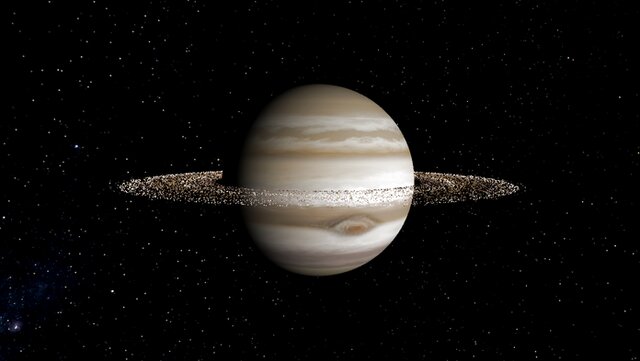

Scientists generally believe that an environment that can support life in its currently known form requires three key components. The first component is a type of energy source that usually comes from the heat and light of a star, and living organisms can use it for photosynthesis. The second component is organic matter. These substances are carbon-containing chemical compounds that may form living organisms. The third component is liquid water. Everything from the moon to distant comets may contain water in frozen form, but for life to exist, water must be in liquid form.
Consider Saturn’s visible rings. Within them, there are two of the three components necessary for life as we know it. Although Saturn’s rings may seem like an unlikely place for organic matter to exist, NASA’s Cassini mission has shown that carbonaceous compounds such as butane and propane are leaking from Saturn’s innermost rings into the gas giant’s atmosphere.
The third component, liquid water, is a missing piece of this puzzle. Matthew Tiscareno, a planetary scientist at the Search for Extraterrestrial Intelligence (SETI) said: “You have organic material falling in the rings and there is sunlight, but no trace of liquid water.” Water is abundant but it is frozen.
This makes the existence of life in any of the rings of the solar system, which are all too far away and too cold to melt water ice, a difficult possibility. They are closer, the sun’s heat can provide the liquid water we seek.
Despite all their efforts, scientists have yet to find rings around an inner planet, either in our own solar system or in another system. Therefore, they can only make educated guesses about the shape of these rings. Instead of the water-ice rings we find around Jupiter or Saturn, these warmer rings may be collections of boulders.
Related article: 12 new moons were discovered for Jupiter
It is difficult to keep water in liquid form due to the conditions of the surrounding space. Without an atmosphere, liquid water tends to evaporate. An atmosphere is needed to keep liquid water stable, Tiscarno noted.
Many scientists think that simple life may have arrived on Earth billions of years ago by hitching a ride on an asteroid that hit a much younger planet. This theory called “Panspermia” was strengthened in 2023. At that time, scientists found an organic compound called uracil and a component of arane in a sample obtained by Japan’s Hayabusa 2 mission from the asteroid Ryugu. On the other hand, there are doubts about whether these compounds really originated from the asteroids themselves.


Artificial intelligence identifies cancer killer cells


Discovery of new hydrothermal wells at a depth of 2.5 km in the ocean


Discover a new answer to the ancient mystery of a Venus!


Discovering new evidence of the impact that formed the Earth’s moon


Maybe alien life is hidden in the rings of Saturn or Jupiter


The secret of the cleanest air on earth has been discovered


How extinct animals could be brought back from death?


Xiaomi Pad 6S Pro review


Testing a vaccine that reduces liver tumors


6 features of HyperOS operating system that you must experience
Popular
-



 Technology9 months ago
Technology9 months agoWho has checked our Whatsapp profile viewed my Whatsapp August 2023
-



 Technology10 months ago
Technology10 months agoHow to use ChatGPT on Android and iOS
-



 Technology9 months ago
Technology9 months agoSecond WhatsApp , how to install and download dual WhatsApp August 2023
-



 Technology11 months ago
Technology11 months agoThe best Android tablets 2023, buying guide
-



 AI1 year ago
AI1 year agoUber replaces human drivers with robots
-



 Humans1 year ago
Humans1 year agoCell Rover analyzes the inside of cells without destroying them
-



 Technology10 months ago
Technology10 months agoThe best photography cameras 2023, buying guide and price
-



 Technology11 months ago
Technology11 months agoHow to prevent automatic download of applications on Samsung phones
